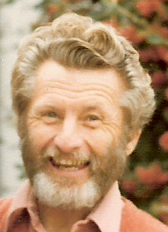Software development
Early sonar transducers had been developed from simplistic design assumptions followed by a trial and error design modification if the transducer failed to meet performance goals. That design approach became impractical for the large number of variables involved in optimized electrical coupling of array elements coupled acoustically by the physics of fluid water. NEL explored transducer theory with tensor analysis and continuum mechanics to determine viscous and hysteretic dissipative effects of transducer materials and radiation impedance of transducers in the water medium. NEL's mathematical models for mutual radiation impedance of transducer elements overwhelmed mechanical calculators and taxed capabilities of contemporary electronic computers. [5]
In 1961, the United States and United Kingdom undertook a joint effort to develop digital computer software for analysis and design using the ALGOL-based Navy Electronics Laboratory International Algorithmic Compiler (NELIAC). Early software used direct models to determine critical resonance and antiresonance frequencies of piezoelectric materials and immitances at those frequencies. Results were graphed and solutions were determined to the desired accuracy by visual comparison of successive runs of the direct model software. Martin developed "find parameters" software evaluating capacitance, dissipation, resonance, and antiresonance with a Jacobian matrix and its inverse to determine losses separately for dielectric, elastic, and piezoelectric properties of individual barium titanate ceramic components. He completed the software in the summer of 1964 and it was announced at the September, 1964, seminar of the Office of Naval Research. His software was translated from NELIAC to Fortran and distributed in 1965. [6] His automated approach to inverse modeling was subsequently presented at the 1974 IEEE Ultrasonic Manufacturers Association conference [7] and the 1980 meeting of the Acoustical Society of America. [8]
Martin completed a doctoral dissertation on lateral effects in piezoelectric systems at the University of Texas from 1964 to 1966; and continued working at NEL until his retirement in 1980. Shortly before retirement, he was awarded a patent (assigned to the United States Navy) for discrete amplitude shading for lobe-suppression in a discrete transducer array. [9]
Martin founded Martin Analysis Software Technology Company following retirement; and contracted with the Navy for high-resolution beamforming with generalized eigenvector/eigenvalue (GEVEV) digital signal processing from 1985 through 1987 and for personal computer aided engineering (PC CAE) of underwater transducers and arrays from 1986 through 1989. [10] Martin published an expanded theory of matrices in 2012 entitled A New Approach to Matrix Analysis, Complex Symmetric Matrices, and Physically Realizable Systems. [11]
This page is based on this
Wikipedia article Text is available under the
CC BY-SA 4.0 license; additional terms may apply.
Images, videos and audio are available under their respective licenses.

